

 The South African
The South African

Side view above water

Side view
U-509, unofficially known as 'Sea Wolf', was a Type IX C German submarine and played an active part in the German naval effort during the Second World War. She was laid down as Yard Number 305 on 1 November 1940 at Deutsche Werft AG in Hamburg and launched on 19 August 1941. Built to operate on the high seas, she had a displacement of 1 120 tons, and her twin MAN diesel engines could drive her along at 18.3 knots on the surface. By the standards of the day, this was extremely fast. She also had double-acting electric motors which gave her a submerged speed of 7.3 knots and could carry sufficient fuel to give her a range of 13 450 nautical miles. The submarine was equipped with a formidable array of weaponry, including torpedoes, mines, a deck gun and an anti-aircraft gun. She carried a crew of 48 officers and men.
By 22 October 1941 she was ready to be handed over to the Kriegsmarine and was officially commissioned on 4 November 1941, under the command of Fregattenkapitan Karl-Heinz Wolff. No doubt her nickname, 'Sea Wolf', was a play on her first commander's surname and also inspired the emblem on her ship's crest, the head of a German Shepherd.
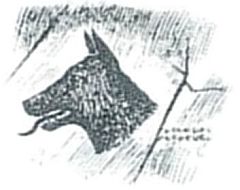
Wolf's Head emblem
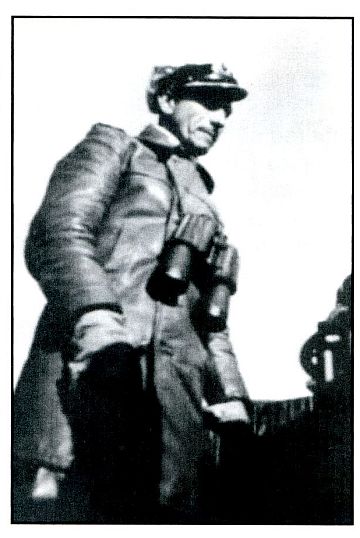
Fregattenkapitän Karl-Heinz Wolff, first commander of U-509.
On commissioning, Wolff took his boat around to Stettin in the Baltic where they joined the 4th U-Flotilla for training and work-up. Six months later, in June 1942, U-509 sailed on her first mission. This was to Kristiansand in Norway, where she took on fuel and stores before heading out into the Atlantic. While on passage she encountered her first enemy ship, an Allied destroyer, which Wolff left severely alone by manoeuvring away from her. Two weeks later, Wolff stumbled across his first target, an unescorted freighter. After an unsuccessful six-hour chase, he conceded defeat as it gradually outpaced him, but the very next morning he came upon an unidentified two-funnelled small ship with a tripod mast. It was obviously some type of warship and U-509 promptly attacked. Firing one torpedo (which missed), Wolff quietly made off from the scene to make a rendezvous with U-460, to take on fuel and stores for a further 24 days.
So far the mission was not proceeding very successfully, but on 19 July U-509 came across a ship steaming independently. Once again, the prey escaped. Wolff then headed for the Caribbean, passing through the Mona Passage and then heading for the Yucatan Peninsula.
From there he headed for the Cuban coast, and while off Havana, encountered a small ship. Once again, fate or luck was against U-509, for the ship turned out to be a neutral, the Argentinean Rio Chabut and the attack was aborted.
The very next day, while moving towards Guadeloupe, U-509 was attacked from the air by a Catalina from Guantanamo, and these attacks continued over the next four days. During the first attack, she suffered minor damage, which was repaired by the crew. During the second attack, when three bombs were dropped, she was again slightly damaged, but in the third attack she suffered no more than a distant depth-charging. She then received orders to terminate her patrol and make her way to France.
The litany of bad luck (or incompetence) continued as, on 30 August 1942, U-509 encountered a single destroyer travelling alone. Wolff launched a salvo of four torpedoes at this tempting target, but all four missed and the destroyer moved out of range.
The following day U-509 received orders to rendezvous with U-516, to pass across fuel and torpedoes on the way home. On 2 September, she encountered a single merchant ship travelling alone. Wolff manoeuvred into an attacking position and then found to his disgust that the ship was yet another neutral, Swiss, and the attack had to be aborted. More instructions came through to pass over any spare fuel and torpedoes remaining to U-598 and U-516. This was carried out successfully and on 12 September 1942 U509 berthed in the U-boat pens at L'Orient, after an 80-day deployment.
The boat was taken in hand and fully refitted for her next cruise, which took place exactly a month later. This time, when she put to sea, she was under the command of Oberstleutnant Werner Witte, who held the Iron Cross in both 2nd and 1 st class. Witt's first mission was to join up with a 'wolf pack' of seven other boats and, accordingly, he took up a position in which U-509 could be part of an interception line for any ships or convoys working towards or from Freetown in Sierra Leone. On 25 October he rendezvoused with U409, and the following day they fell in with Allied Convoy SL-125.
Convoy SL-125 was the 125th of the numbered series of convoys of merchant ships from Sierra Leone to Liverpool during the Second World War. Ships carrying commodities bound for the British Isles from South America, Africa and the Indian Ocean travelled independently to Freetown, Sierra Leone, and were then convoyed for the last leg of their voyage. Forty-two ships departed Freetown on 16 October 1942, with a weak escort of Flower class corvettes Petunia, Cowslip, Crocus and Woodruff.
German cryptographers decoded message traffic containing tactical information about Convoy SL-125 and Wolf Pack Streitaxt (Battle-Axe), comprising U-103, U134, U-203, U-409, U-440, U-509, U-572, U-604 and U659, was assembled on 23 October to intercept the convoy west of the Canary Islands. U-203 found the convoy on 25 October but was depth-charged and damaged while attempting to attack the 7 700-ton British tanker Anglo Maersk. The tanker was subsequently shadowed by U-134 and damaged by U-509.
U-409 found and reported the main convoy of 37 ships on 27 October. U-659 was depth-charged and damaged while attempting to attack the convoy. After moonrise, U-604 sank the damaged Anglo Maersk while U509 torpedoed the 1 591-ton British freighter Pacific Star and the 6 148-ton British freighter Stentor. Forty-four merchant sailors were lost, with 6 000 tons of West African produce and 5 037 tons of refrigerated meat and general cargo. After unsuccessfully submerged daylight attacks on 23 October, U-509 sank the 5 283-ton British freighter Nagpore and damaged the 5 178-ton British freighter Hopecastle after sunset. U-203 sank the damaged Hopecastle before dawn. Twenty-four merchant sailors were lost with 1 500 tons of copper and 11 000 tons of general cargo.
U-509 sank the 4 772-ton British freighter Britanny during foul weather on the night of 29/30 October.
Fourteen merchant sailors were lost with 7 132 tons of general cargo. Fifty merchant sailors died when the 7 519 British tanker Buffmouth (sailing in ballast) was damaged by U-409 and sunk by U-659. The 7 131-ton British freighter Corinaldo was damaged by both U-509 and U-659 before being sunk by U-203. Eight sailors were lost and 5 141 tons of frozen meat.
Improved weather brought coordinated attacks on the night of 30/31 October. U409 torpedoed the 6 373-ton British freighter Silverwillow, while U-604 torpedoed the 11 898-ton British transport President Doumer and the 3 641-ton British freighter Baron Vernon. Two hundred and sixty-five died and 9 000 tons of general cargo and 55 tons of iron were lost. The 6 405-ton British freighter Tasmania was damaged by U-659 and sunk by U-103, with the loss of 8 500 tons of food and iron and two of her crew.
Royal Air Force (RAF) Coastal Command long-range bombers arrived over the convoy on 31 October. Admiral Karl Donitz cancelled operations on the morning of 1 November. The convoy reached Liverpool on 9 November. It suffered the greatest loss of any SL convoy, but its timing focused available U-boats in the area away from the Operation Torch convoys for the allied invasion of North Africa on 8 November 1942. Some historians have suggested trade convoy SL-125 was an intentional tactical diversion to keep U-boats away from the loaded troop transports.

The look-out on the U-509
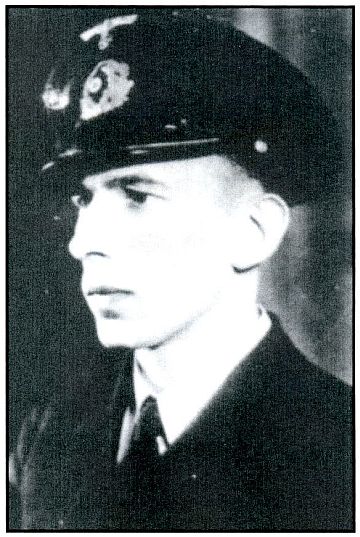
Oberstleutnant Werner Witte, second commander of U-509
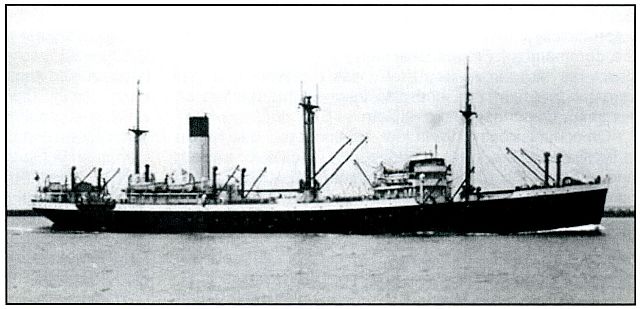
The British freighter, Stentor, was torpedoed by U-509
U-509: AREA OF OPERATIONS, 15 SEPTEMBER TO 26 NOVEMBER 1942
With the dissolution of the Wolf Pack, U-509 met up with U-103 and U-108 for a mutual re-arrangement of torpedo stocks and stores, after which she was allocated to Wolf Pack 'Schlagetot' and ordered to the Moroccan coast to attack the Allied invasion fleet taking part in Operation Torch. She arrived on station on 11 November 1942, after being continuously bombed and depthcharged on passage by Allied surface craft and aircraft. This only got worse. On 13 November U-509 was discovered and attacked by an Allied aircraft, which called up three destroyers which followed and depth-charged her for two hours. Witte slipped away intact, only to hit a mine off Casablanca. Apart from slight damage to the stern, the boat was intact. Witte was having a run of luck which held for the next few days.
On the afternoon of 14 November, he was attacked by destroyers who dropped 25 depth charges to no avail. U-509 escaped without damage. On 16 November he was again attacked, this time by an aircraft which dropped three bombs, again with no damage. The scenario was repeated on 17 November when another aircraft dropped two bombs, once again with no damage to U-509.
It must have come as a relief to all when U-509 was recalled on 18 November to L'Orient, where she arrived on 26 November 1942. She had been at sea for 42 days and had sunk four merchant ships and damaged three more.
IN SOUTHERN AFRICAN WATERS
On 23 December 1942 Witte took U-509 to sea on her third war patrol. The boat was to form part of Operation Seehund, a six U-boat operation designed to disrupt convoys rounding the Cape of Good Hope. On 29 January U-509, together with a travelling companion, U-506, made a rendezvous with U-459, 600 nautical miles south of St Helena, in order to refuel and top up their stores. Pushing on, they were off the coast of South Africa by 6 February, and took action to avoid a small patrol boat. Three days later they encountered their first convoy, but were unable to get into a firing position. The next day, 10 February 1943, brought better luck, and U-509 fell in with Convoy CA-11.
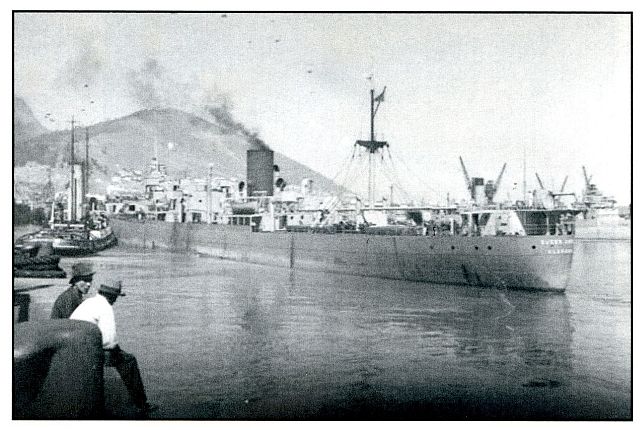
Queen Anne in Table Bay Harbour, Cape Town
Witte was quick to take advantage and, at 02h19, launched an attack on the freighter, Queen Anne, owned by T Dunlop and Sons of Glasgow. The attack took place eight miles south-southwest of Cape Aghulas, and the Queen Anne, which was carrying roughly 7 000 tons of government stores, including explosives, sank rapidly. Five of her crew, including the Master (Captain C H Radford), out of a total of 45 were lost. The U-509 was immediately counter-attacked by HMS St Zeno, an anti-submarine trawler which opened fire on her and also dropped seven depth charges, all to no effect as Witte made his escape. The St Zena then picked up seventeen survivors and landed them at Cape Town, while the remainder came ashore at Struisbaai, near Bredasdorp. Their lifeboat, Christened Nutmeg of Consolation, has been restored and decked over and is now a recording station for Thomas Dolby in the United Kingdom.
U-509's luck then took a turn for the worse, seeming to repeat her previous Caribbean adventures. On 15 February 1943, she encountered a convoy of eight ships, but, while taking up an attacking position, she was discovered by an escort and driven away. Contact with the convoy was lost. The following day, U-509 sighted a large steamer travelling independently but was unable to take up a firing position. On 27 February she attacked a 'three-island' steamer but missed, with all the torpedoes fired. An attack on a second ship also failed. The next day she attacked a small ship with a single torpedo, which missed and the intended prey escaped.
On 7 March 1943, U-509 was attacked by a Ventura aircraft but was able to dive and escape. On 2 April, her luck changed when she encountered Convoy Lüderitz NC-9, north-west of Cape Town. U-509 closed in and, at 22hOO, torpedoed the Ellerman and Bucknall City Liner, City of Baroda. The heavily damaged vessel was towed to Lüderitz and was beached. There she broke in two and was declared a constructive loss. One crew member and seven passengers were killed, but the Master (Captain C S Nelson), 128 crew members and 196 passengers were picked up by HMS Cape Warwick and landed in Cape Town.
As a last effort before returning to L'Orient, on 5 April U-509 attacked a fishing trawler with two torpedoes. Both torpedoes missed. By now U-509 was running out of food and fuel and the following day set sail for France.
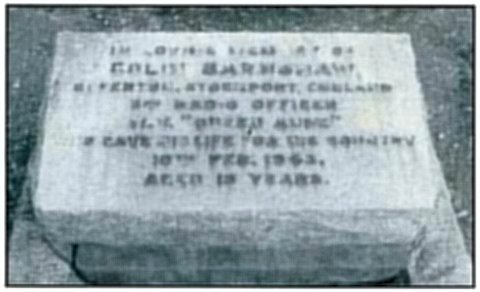
Gravestone in Bredasdorp, South Africa, in memory of Colin Barnshaw,
3rd Radio Officer on board Queen Anne, sunk by U-509 on 10 February 1943.
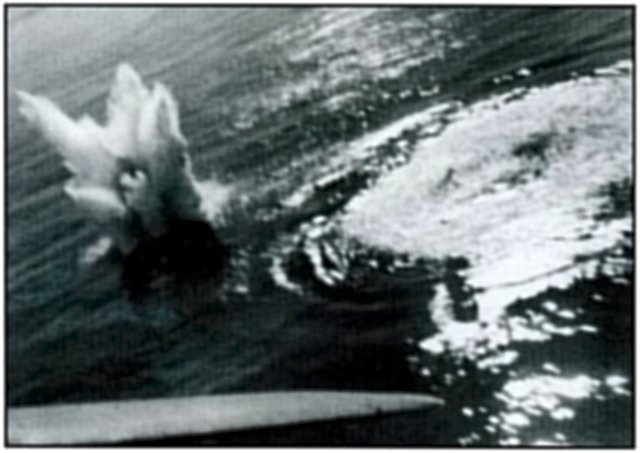
Attack on U-509, 14 July 1943
Last days
The trip back to L'Orient took 41 days, from 6 April to 11 May 1943. This included two hook-ups with other U-boats, U-178 and U-160, south of the Azores to top up with fuel, food and water. U-509 arrived back in L'Orient after 140 days at sea, during which time she had sunk two Allied merchant ships. Her group, Gruppe Seehund, had achieved little success in the South Atlantic, when compared to the distance travelled.
On arrival the boat was docked for a refit and modernising, receiving a second anti-aircraft platform. This was completed by 3 July 1943 and, on that day, U-509 set out once again from L'Orient for service in the North Atlantic, again under Oberstleutnant Witte. However, before she could accomplish anything, she was caught on the surface by an Avenger from the USS Santee and attacked with a homing torpedo. She was lost 'with all hands'.
Annotated bibliography
This article was compiled from notes assembled on the U-509 by Leon van der Westhuizen.
Busch, R and Roll, H-J, German V-boat commanders of World War Two: A biographical dictionary (1999) his book details the service records of 1 400 officers of the German Kriegsmarine. See page 291 for the U-509.
Online sources: http://www.photoship.co.uk is a fascinating site with plenty of photographs of naval vessels, including the Queen Anne as well as links to additional databases. Entries in Lloyd's Register of Ships can be found at http://www.plimsollshipdata.org.
There are copious amounts of online information regarding German U-boats, but the best is at www.uboat.Net. For information on U-509, Captain Witte, and the Queen Anne, see http://www.uboat.net/allies/merchants/ships/ 2646.html
During her lifetime, U-509 had done five patrols, spent 275 days at sea, sank six ships, damaged a further three, and caused the loss of 204 048 tons of Allied shipping.
Return to Journal Index OR Society's Home page
South African Military History Society / scribe@samilitaryhistory.org